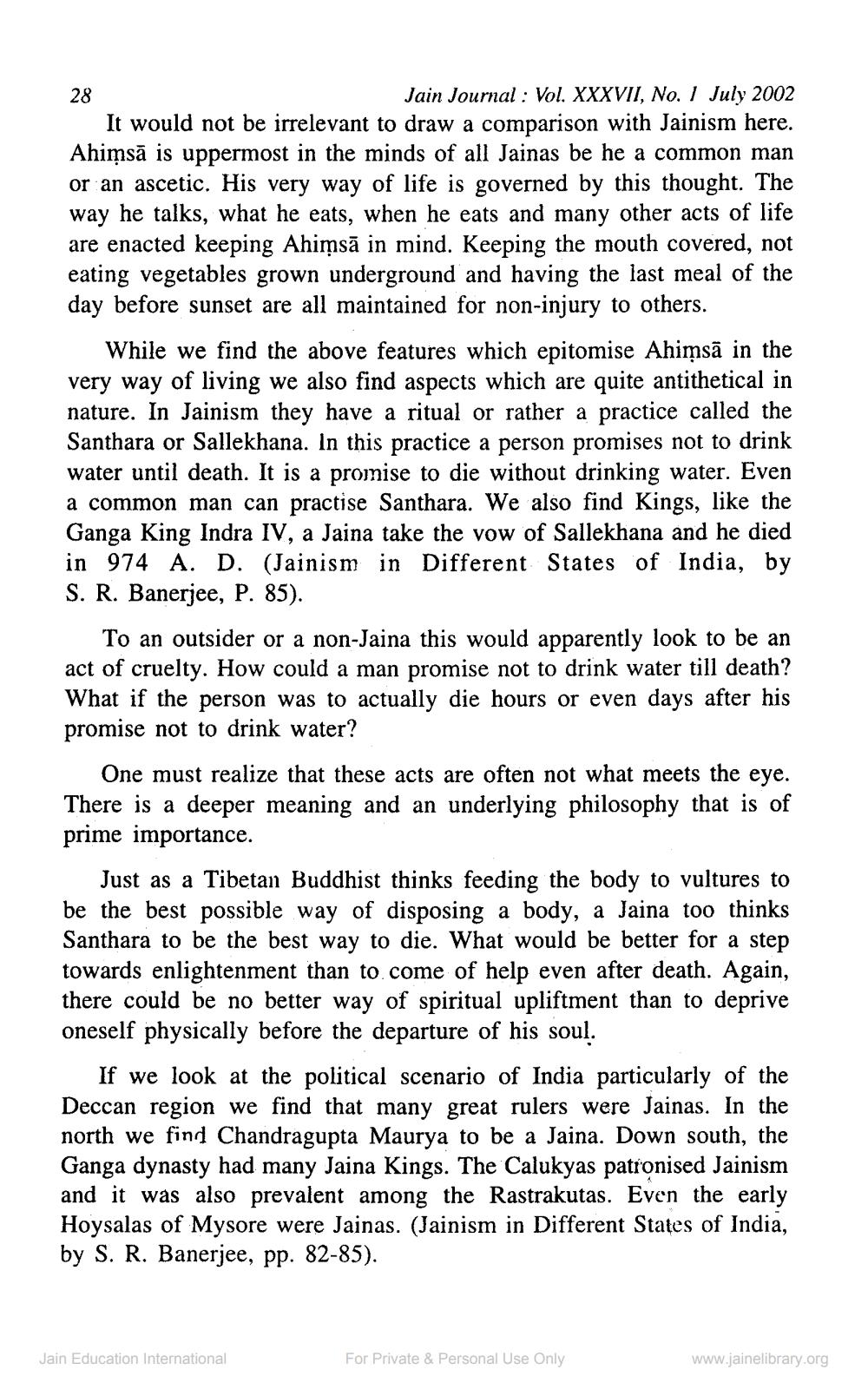________________
28
Jain Journal : Vol. XXXVII, No. 1 July 2002 It would not be irrelevant to draw a comparison with Jainism here. Ahiņsā is uppermost in the minds of all Jainas be he a common man or an ascetic. His very way of life is governed by this thought. The way he talks, what he eats, when he eats and many other acts of life are enacted keeping Ahimsā in mind. Keeping the mouth covered, not eating vegetables grown underground and having the last meal of the day before sunset are all maintained for non-injury to others.
While we find the above features which epitomise Ahimsā in the very way of living we also find aspects which are quite antithetical in nature. In Jainism they have a ritual or rather a practice called the Santhara or Sallekhana. In this practice a person promises not to drink water until death. It is a promise to die without drinking water. Even a common man can practise Santhara. We also find Kings, like the Ganga King Indra IV, a Jaina take the vow of Sallekhana and he died in 974 A. D. (Jainism in Different States of India, by S. R. Banerjee, P. 85).
To an outsider or a non-Jaina this would apparently look to be an act of cruelty. How could a man promise not to drink water till death? What if the person was to actually die hours or even days after his promise not to drink water?
One must realize that these acts are often not what meets the eye. There is a deeper meaning and an underlying philosophy that is of prime importance.
Just as a Tibetan Buddhist thinks feeding the body to vultures to be the best possible way of disposing a body, a Jaina too thinks Santhara to be the best way to die. What would be better for a step towards enlightenment than to come of help even after death. Again, there could be no better way of spiritual upliftment than to deprive oneself physically before the departure of his soul.
If we look at the political scenario of India particularly of the Deccan region we find that many great rulers were Jainas. In the north we find Chandragupta Maurya to be a Jaina. Down south, the Ganga dynasty had many Jaina Kings. The Calukyas patronised Jainism and it was also prevalent among the Rastrakutas. Even the early Hoysalas of Mysore were Jainas. (Jainism in Different States of India, by S. R. Banerjee, pp. 82-85).
Jain Education International
For Private & Personal Use Only
www.jainelibrary.org




